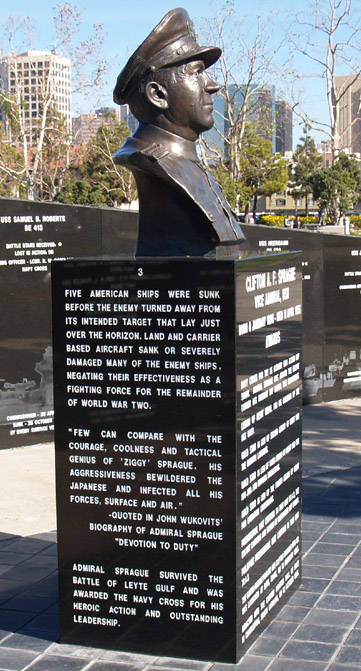Table of contents for Piracy USNI Conference
- “Blackbeard to Barbary Pirates, Making Their Mark on History” Panel
RADM Callo, USN (Ret) leading the panel. Author of “John Paul Jones, America’s First Sea Warrior,”
Wants us to leave thinking not “I didn’t know that,” but “I hadn’t thought of it.”
Consider the technology of piracy. That which supports it, that which suppresses it.
Thought: “Piracy is a business. It has a business model. If you are to suppress it, you need to treat it like a business.”
We have the best operators, but if the political aspect of counter piracy isn’t handled well, we can’t stop it. Political will a huge factor involved.
Professor Dr Lundsford, @ USNA, Author: “Piracy and Privateering in the Golden Age Netherlands.” Notes the Brits didn’t just go after pirates with raw Naval Power, but by looking at altering the economics and the social morays, too. Good idea to look at the societies that use piracy for clues as to how to deal with it. Factors in long term piracy:
- Available population of recruits.
- Base of operations
- Sophisticated organization
- Financing
- Cultural bonds for solidarity
- Access to goods to be raided
Frederick Lanier, Attorney, author: “The End of Barbary Terror: America’s 1815 War against the Pirates of North Africa.” The Barbary Pirates are the most noted in US historical memory. It only affected us 30 years, but had haunted Europe for centuries. It took taking two of our ships and hundreds of our people to get us to act, and that was the spawning of our Navy. We did begin with paying off the Pirates, from George Washington, to the tune of 12% of the Federal Budget, and the lack of power, we were at their mercy.
The Barbary Pirates were driven by money, but did have some elements of Jihad.
They were not localized geographically, but ranged outside the Med, as far as Ireland and maybe Iceland, using amphibious assaults.
They had been around for centuries. John Adams said don’t take them on, unless we were willing to deal with it for centuries. Think about that for a moment…
Sponsored by the current regimes of the day, for their financial gain. The goal was ransom money. An organized ransom market. Options: Pay or use force. You could pay in advance! Protection payments, which we did for almost 20 years with Algeria.
Conveys, blockade their ports, arm your merchants, bombard their bases, or…regime change.
“Intelligence” between sailors useful.
Brits payed Pirates to keep their Naval costs down, as then the pirates raided the ships from other countries. Incentiving?
LCDR Ben “BJ” Armstrong, USN. Active duty HSC-2 pilot. Masters in Military History and a real operator.
Personnel: Need to be trained in “Irregular Warfare.” Boarding and landing operations need to be practiced.
Aggressive junior officers are a necessity, Like Decauter. Stephen Decauter was the one who came forward with the idea to burn the PHILADELPHIA. The right vessels need to be available to engage in the fight. “Littoral Warfare” needed effective ships.
You also need partnerships, for logistics and other support.
Use history, but there is no exact parallel.
Now to questions.
Dr Lunsford: When it’s a “way of life,” it’s very difficult to eradicate, eg: The “bucaneers.”
RADM Callo: Sophistication: The Ability to adjust. They are doing that now.
How does the 1820s pirate experience fit today? CNA rep. LCDR Armstrong:
Biddle, Poter and Wearington.
Biddle: Bring ships and run convoys.
Porter: go “inshore.” ROE: Spain wouldn’t grant permission to go ashore.
Be careful as how you draw historic parallels.
Dr Lunsford: Don’t see the parallels with Latin America break away period. Get ride of the recruits and base of operations, you solved the problem. Make sure you look for operational and political (i’d add economic) lessons for application of parallels.
Danish Navy Officer: Can small navies make an impact: LCDR A: “Yes, absolutely.” The US Navy was the “small Navy” when it took on the pirates in the 1800’s. Frank Lanier: Us wanted to act unilaterally, but James Madison instructed to allow Dutch Navy to act as allies. The Dutch Navy bombarded Algiers the next year. Dr Lunsford: The US Navy can’t be everywhere. TF 151 is an example to address the problems. RADM Calo: “quantity has a quality of it’s own.”
ADM McKnight chimes in (he commanded TF 151): Danish Navy ship ABSOLOM was excellent on TF 151. Well prepared.
LCDR Armstrong: Cooperation can be extended beyond navies. NGOs and commercial interests and other government.
Frank Lanier: State supported terrorism? The Barbary pirates made money for the political structure that supported them. They made money off of “Christian Dogs” but it wasn’t about expanding the Caliphate.
Any “fingers of the Russians, Chinese or other Arab states funding these activities (in Somalia)?” No one has heard of it, but LCDR A indicated Russians and Chinese are part of the anti-piracy work.
Former Adm of MSC: “Struck by the number of ‘stakeholders’ who came to join in the current discussions.” Maritime unions, Lloyds of London, commercial companies, etc.
Frank Lanier: Much more interrelated today, it was simpler back then.
(Off to find a power outlet……)
RADM Callo: every US Citizen is a “stakeholder” in this issue…..


